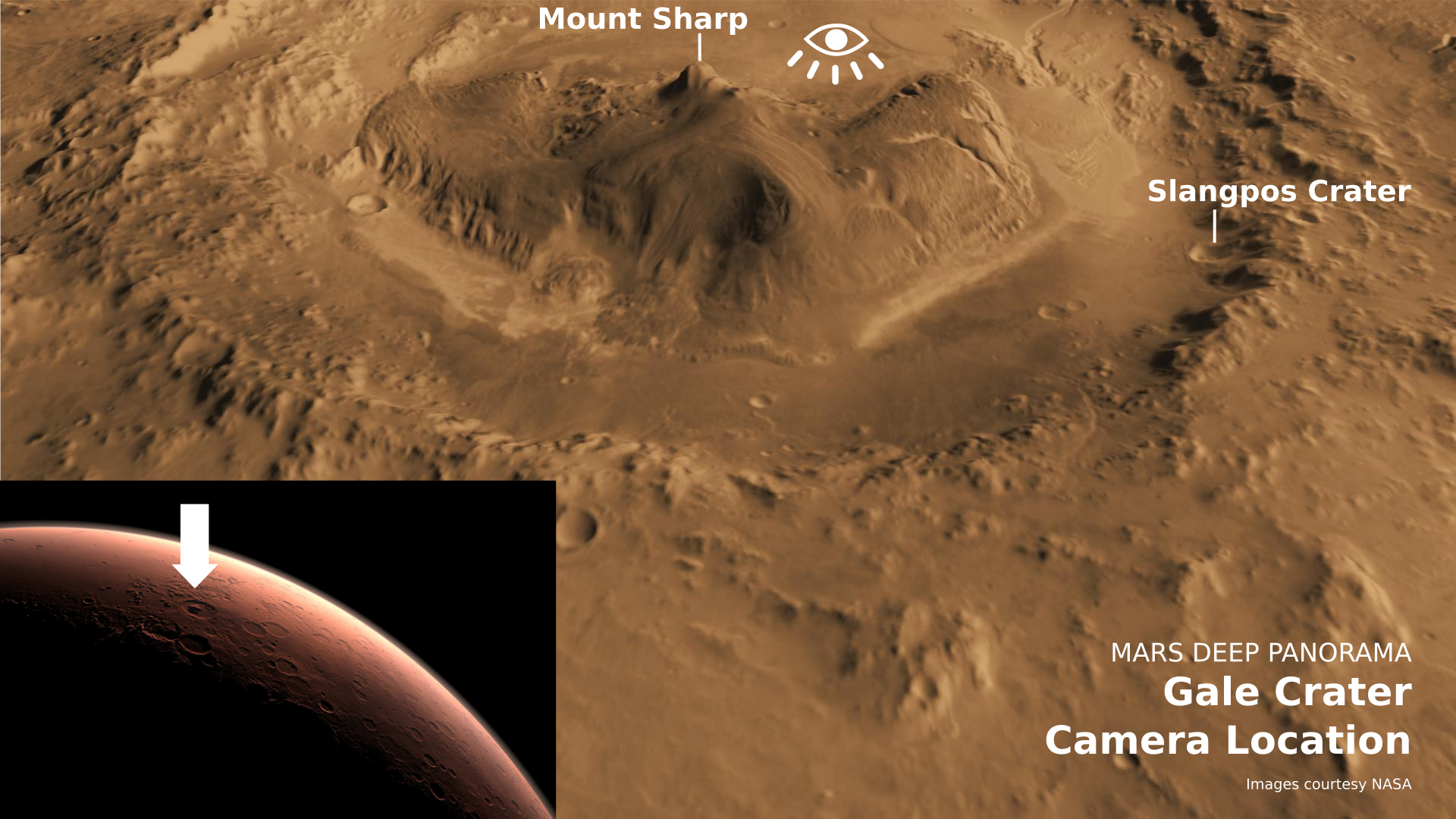Art > Interactive > Mars Deep Panorama
>> Mars Deep Panorama (Link may take a few seconds to load) is a zoomable, high resolution concept-in-progress view of how a fledgling outpost on the Red Planet might look. Click and/or use your mouse, trackpad, finger movements (if touchscreen) etc. to zoom in and out of the image. Works best on a desktop or laptop -sized screen.
Background
This work is created from a high resolution composite panoramic image of the martian surface taken by the Curiosity Rover and downloaded from the NASA website. Then edited using open-source image editor Gimp to remove the Rover (except for its tracks) and smooth out the sky. Illustrated over top with open-source scalable vector graphic software Inkscape. The resulting large artwork is sliced up and mounted in a zoomable web interface based on the OpenSeadragon javascript framework, which optimally displays just the appropriate tiles from an "image pyramid" as the interface is manipulated.
The panorama showcases a region from the side of Mount Sharp within Gale Crater. The high-resolution composite background photo was taken between November 24th and Dececember 1st, 2019, while Curiosity had a rare chance to image its surroundings from the same vantage point over several days.

The mineral-rich clay sediments that make up this area are indicative of a former lake-based alluvial floodplain and could prove ideal for agricultural purposes. The wind-dessicated dune on the left side of the panorama exemplifies more recent geomorphological activity.
At operations portrayed in the panorama's foreground, seedlings, plants, and even small trees are nurtured in several large greenhouses while oxygen (and hydrogen) is obtained through electrolysis of underground water and combined with nitrogen to create breathable air. To the right, a small Tokamak nuclear fusion reactor powers a similarly compact steam turbine generator that charges batteries and feeds a proto- power grid.
To provide an idea of the scale of this large panoramic image, the smaller crater, Slangpos Crater, that can be seen beneath the large rocket over on the left, and which sits inside the larger Gale Crater whose outer wall forms the mountain ridge running along the horizon, is 32 kilometers away and nearly 5 kilometers across!

Rationale
Space travel has been a serious interest for years and the proximity and mystery of Mars has a compelling allure. One of my first and most memorable science fiction reads was Robert Heinlein's Red Planet, and the very copy I had borrowed as a youngster still resides at my childhood library with the decades-old due date stamp of my loan inside its ragged and taped cover.
The Mars Deep Panorama was created during the covid pandemic lockdown in April and May 2020. As health care systems and economies showed signs of a rough road ahead, it was felt an image of hope for the future was needed. Many argue that efforts at advancing space travel are a wasteful diversion from more pressing problems. Rather, and similar to how the race to put the first man on the moon began while the Cold War and the Viet Nam wars raged, these initiatives can help galvanize humanity on a fundamental level, and enable the advancement of technology. Moreover, a viable response to longer term questions of human civilization and evolution should form part of our collective consciousness.
About Alan Kirker
Introduction & statement.
Curriculum Vitae (pdf)
Employment & education highlights.
alankirker@gmail.com
Contact Alan with your questions.